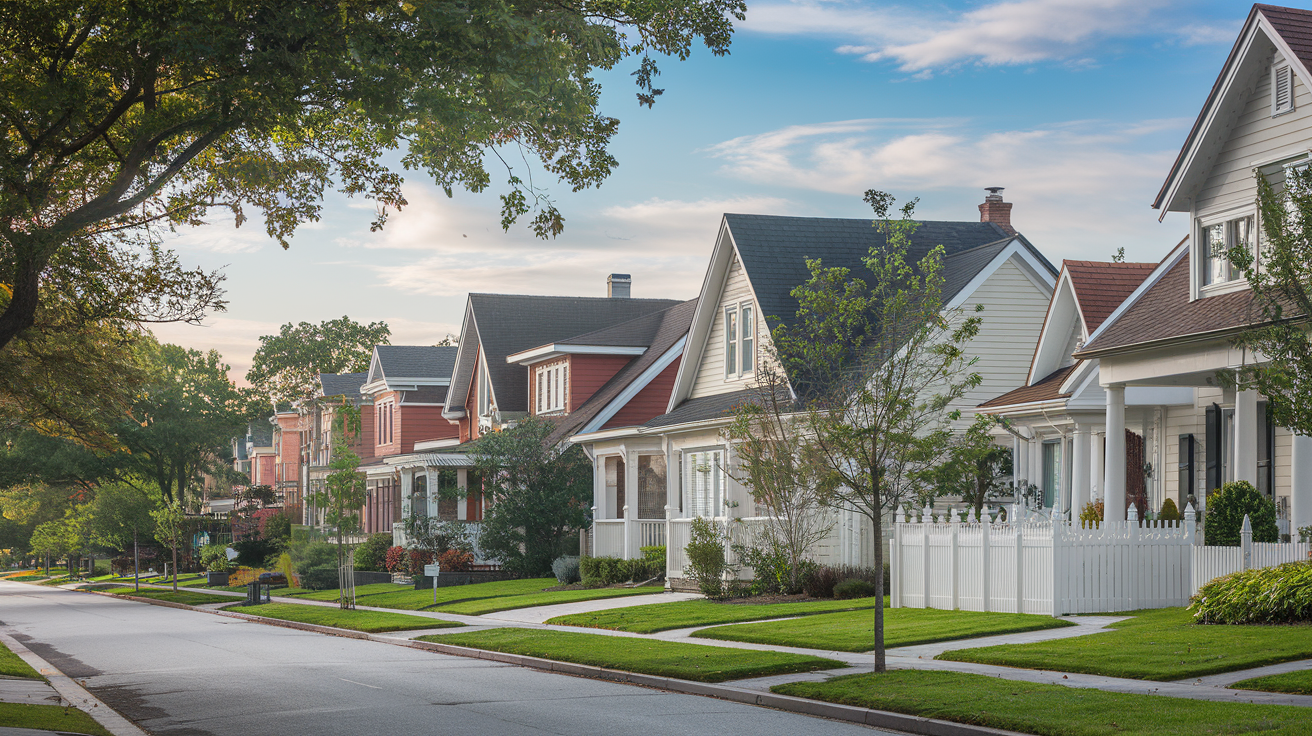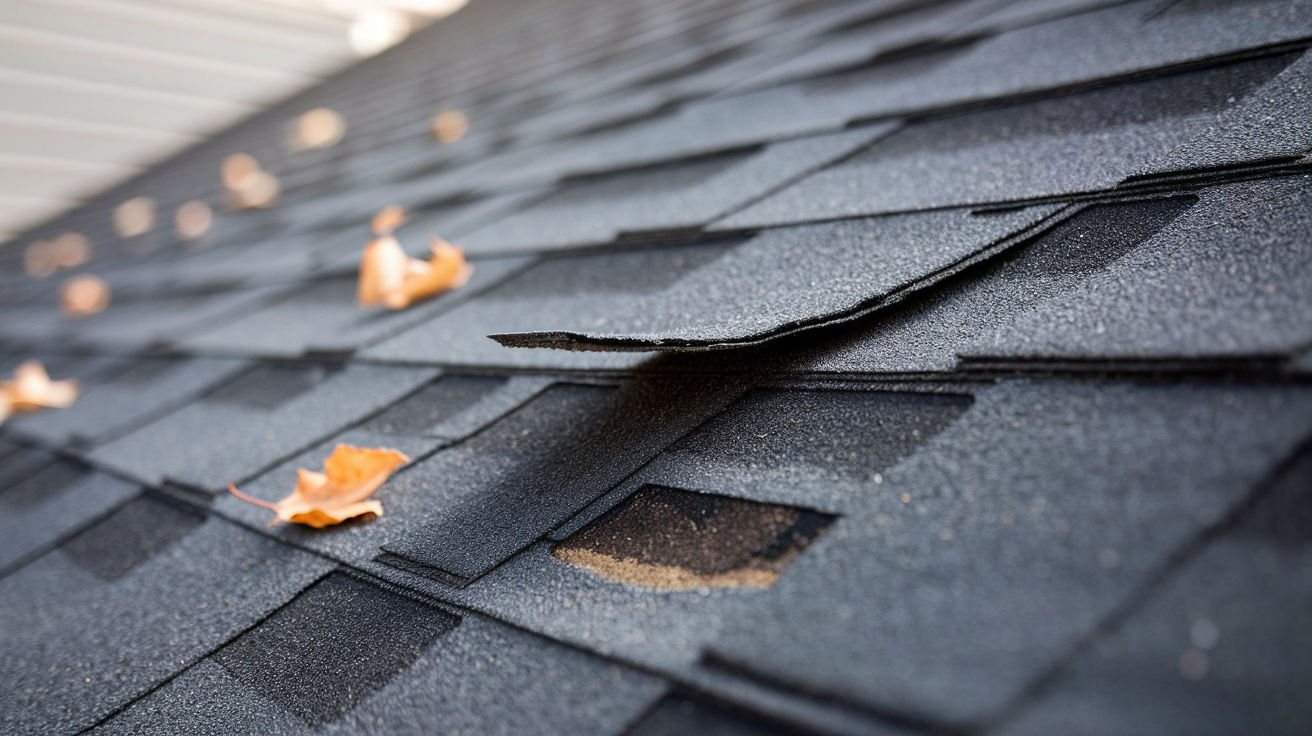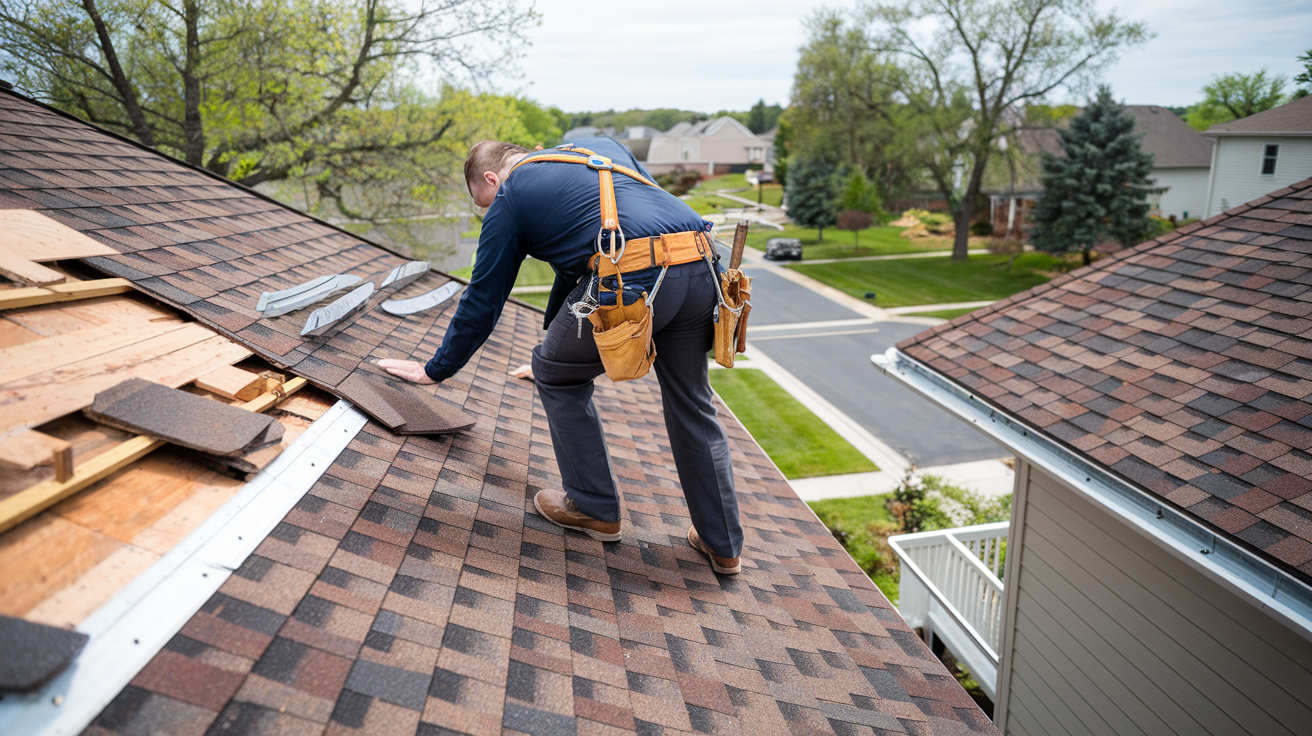Poor Roof Installation Costs: Expert Guide to Avoiding $1,600+ Repairs
Your home's roof is its first line of defense, yet 33% of homeowners face premature roof replacement due to poor installation practices. A badly installed roof doesn't just leak - it can lead to structural damage, mold growth, and skyrocketing energy bills. With repair costs averaging $985 and full replacements running into tens of thousands, the financial impact of poor installation can be devastating for homeowners.
Understanding the consequences of poor roof installation is crucial for protecting your investment. Whether you're planning a new roof or suspecting issues with your current one, knowing what can go wrong - and how to prevent it - could save you thousands in repairs. From choosing the right contractor to identifying warning signs early, this guide will help you avoid the costly mistakes that plague many homeowners.
We'll explore the immediate and long-term effects of poor installation, share expert insights on proper techniques, and provide practical steps for ensuring quality work. You'll learn how to identify red flags, understand the importance of proper materials and methods, and make informed decisions about your roof's installation or repair.
- Understanding the Consequences of Poor Roof Installation
- Identifying Signs of a Bad Roof Installation
- The Financial Implications of Poor Roof Installation
- The Importance of Hiring Qualified Roofing Professionals
- Steps to Ensure a Quality Roof Installation
Understanding the Consequences of Poor Roof Installation
This section explains the problems a bad roof installation can cause. We'll look at common issues, long-term effects on your home, and how your local climate plays a role. Knowing this information helps you avoid costly mistakes by hiring qualified roofers.
Common Issues Caused by Improper Installation
A poorly installed roof can immediately lead to several problems that compromise your home. One common issue is roof leaks. These often happen when shingles aren't aligned correctly or when flashing around chimneys, vents, and other roof penetrations isn't installed properly. Leaks let water into your home, showing up as drips, water stains, or even a stream of water during heavy rain. This water can damage your home's interior, leading to costly repairs and dangerous mold growth. Poor roof alignment and inadequate sealing can also damage shingles, increasing the risk of leaks. Another common problem is poor ventilation. Poor ventilation traps heat and moisture in the attic. The trapped heat can damage the roof decking and shorten shingle lifespan. Excess moisture can cause rot and mold, leading to higher energy bills and structural damage. You can learn more about roof maintenance to avoid these problems.
| Common Issues | Consequences |
|---|---|
| Leaks | Water damage, mold growth |
| Poor Ventilation | Rot, higher energy bills |
Long-term Effects on Home Value and Safety
Improper roof installation has long-term consequences for your home's value and safety. A poorly installed roof fails sooner than a properly installed one, requiring earlier replacement. This significantly lowers your home's resale value, as buyers know they'll need a new roof soon. A damaged or failing roof can deter potential buyers. A compromised roof also creates safety hazards. It may not hold up in severe weather, increasing the risk of storm damage. Roof failure during a storm can cause significant water damage and damage your belongings. It may even lead to higher insurance premiums. Consider getting a Get Your Roof Assessment to identify potential issues.

Regional Climate Impacts on Roofing Problems
Local climate conditions can worsen the effects of poor roof installation. In areas with heavy rain or snow, a poorly installed roof deteriorates faster due to increased water damage. Different climates require different installation methods and materials. For example, snowy areas need stronger materials and steeper roof pitches to shed snow. In hot, sunny areas, poor sealing and ventilation can warp and degrade shingles, shortening roof lifespan. Homeowners in hurricane-prone areas need extra protection against wind and rain. A bad installation can lead to serious damage. Understanding your region's climate is crucial for ensuring your roof is properly installed.
Identifying Signs of a Bad Roof Installation
Identifying a poorly installed roof early can save homeowners significant money and future headaches. A bad roof installation isn't just about how it looks; it can cause structural damage and shorten your roof's lifespan. This could mean needing a full roof replacement much sooner than expected, a potentially expensive undertaking. Roof repair costs typically range between $376 and $1,649, averaging around $985, but a full replacement is significantly more. Knowing the signs of a bad installation helps you act quickly. This section highlights key indicators of poor roofing work and offers insights into common installation errors for different roofing materials. By recognizing these signs, you can make informed decisions about roof maintenance and repairs and consider getting a roof assessment.
Visual Indicators to Watch Out For
Visual cues are often the first sign of roof installation problems.
Misaligned or Uneven Shingles
Look for misaligned or uneven shingles, a common sign of poor workmanship. This might include shingles not lining up straight or shingles installed at different angles. Misaligned shingles create gaps where wind and water can get in.
Sagging Roof Sections
Check for sagging areas. These can indicate structural problems or inadequate support under the roofing materials. Sagging is a serious issue; it could mean your roof can't support its own weight, much less snow or other loads. This could lead to premature roof failure.
Checklist: Signs of Bad Roof Installation
- ✔ Misaligned or uneven shingles
- ✔ Sagging roof sections
- ✔ Water stains or damp spots
- ✔ Exposed nails or fasteners
Warning Signs in Different Roofing Materials
Different roofing materials show different signs of poor installation.
Asphalt Shingles
For asphalt shingles, look for granule loss (which protects against UV rays) or curling edges. This can indicate improper nailing or not enough adhesive. These problems can lead to early shingle failure and leaks. Missing granules make shingles vulnerable to sun damage, shortening their lifespan.
Metal Roofs
In metal roofs, loose seams and rust spots suggest incorrect fastening or poor weatherproofing. Loose seams allow water and wind to penetrate, while rust weakens the metal and can create holes. Fixing these problems on metal roofs can cost between $750 and $25,000.
Tile Roofs
For tile roofs, cracked or misaligned tiles can result from improper placement or insufficient underlayment support, compromising the roof's integrity. Water can seep between the tiles and damage the underlayment and roof deck. Cracked tiles can also happen from mishandling during installation. Learn more about roof maintenance to prevent these issues.
Common Mistakes in Shingle, Flashing, and Underlayment Installation
Installing shingles, flashing, and underlayment requires skill and attention to detail.
Shingle Alignment and Overlap
Common errors include improper shingle alignment and inadequate overlap. This can cause water damage and wind damage. Incorrectly staggered shingles can create channels for water to flow directly into your roof.
Flashing Installation
Flashing seals joints and roof protrusions (like chimneys and vents). It must be installed correctly to prevent leaks. Loose or improperly fitted flashing is a common mistake that causes significant water damage. This can result from incorrect nailing or not enough sealant. Poor flashing installation is a major cause of roof leaks.
Underlayment Application
Underlayment, the protective layer under the shingles, needs to be applied evenly and without gaps to protect against moisture. A poorly installed underlayment won't protect the roof deck if the shingles fail, leading to rot and costly repairs. Failing in any of these areas not only harms your roof but can also void warranties, leaving you with the repair or replacement costs.
In conclusion, knowing the signs of a bad roof installation is essential for preventing long-term damage and expensive repairs. By being aware of visual cues, material-specific issues, and common installation mistakes, homeowners can protect their investment and ensure their roof lasts. You can also get a Get Your Roof Assessment to ensure everything is in top shape.

The Financial Implications of Poor Roof Installation
Poor roof installation can lead to significant expenses for homeowners, both immediately and over time. Understanding these potential costs helps homeowners make informed decisions about hiring qualified roofing professionals. From fixing leaks to replacing entire roofs, the financial impact of subpar installation can be substantial.
Immediate Costs vs. Long-term Expenses
The immediate costs of correcting poor roof installation often involve repairs for problems like leaks, which are a common reason for roof replacements. Other immediate issues include improper ventilation, which can trap moisture and lead to premature roof failure, and misaligned shingles, which weaken the roof's ability to withstand weather. According to HomeAdvisor, the average roof repair cost in the U.S. is between $386 and $1,875, with a typical repair around $985. This means homeowners could face bills from a few hundred dollars for a minor leak to nearly $2,000 for more extensive damage. However, these initial costs can be dwarfed by long-term expenses if the underlying installation problems remain unaddressed. A poorly installed roof may eventually need complete replacement, which can cost between $4 and $40 per square foot. For a typical home, this translates to tens of thousands of dollars. Addressing installation problems early can prevent much larger expenses later. For example, a small leak might cost a few hundred dollars to fix initially. But if the root cause – a poor installation – isn't addressed, it could lead to major problems requiring a full roof replacement. Get Your Roof Assessment can help identify these issues early.
Poor roof installation often leads to hidden costs, such as frequent repairs. Improperly installed or repaired roofs are more vulnerable to leaks, water damage, and premature failure, all of which increase repair costs. This can result in needing a new roof much sooner than anticipated. These recurring repair expenses accumulate, potentially exceeding the initial cost difference between a quality installation and a subpar one. Learn more about roof maintenance to understand how proper installation minimizes future repairs. Another hidden cost is energy inefficiency. Gaps and misalignments in a poorly installed roof can cause heat loss during winter and heat gain during summer. This can significantly increase energy bills. Industry data suggests that homeowners with poorly installed roofs may spend up to 15% more on heating and cooling annually. For instance, if your annual heating and cooling costs are $2,000, a poorly installed roof could add $300 to your yearly expenses. Proper installation helps avoid these hidden costs and lowers energy bills. Regular roof inspections can identify potential problems early, preventing them from becoming costly repairs.
| Cost Type | Estimated Cost |
|---|---|
| Immediate Repair Costs | $386 - $1,875 |
| Long-term Replacement | $4 - $40 per sq ft |
| Energy Inefficiency | Up to 15% more annually |
Estimated Repair Costs for Common Installation Issues
Repair costs for common installation issues vary depending on the problem and the roofing material. For instance, repairing loose seams or damaged fasteners on a metal roof typically costs between $750 and $2,500. Repairs for cedar shakes or wood shingles can range from $550 to $1,500. These attractive roofing materials can be expensive to repair if not installed correctly. Other materials have varying repair costs depending on the specific issue and the extent of damage. Improper flashing (the material sealing around chimneys, vents, and other roof penetrations) or ventilation problems can cost between $4 and $10 per square foot to repair. This means a 1,500 square foot roof could require between $6,000 and $15,000 to fix improper flashing. These estimates emphasize the importance of hiring skilled professionals for the initial installation to avoid these expenses. Investing in quality installation upfront protects homeowners from the financial burden of repeated repairs and potential structural damage. A professional inspection soon after installation is recommended to identify and address any issues early.
The Importance of Hiring Qualified Roofing Professionals
Hiring qualified roofing professionals is crucial for a durable, long-lasting roof. Poor installation often leads to problems like leaks, a primary reason why approximately 33% of homeowners replace their roofs. It also contributes to premature roof failure, necessitating expensive repairs or replacements. Homeowners typically spend between $376 and $1,649 on roof repairs. Choosing a qualified contractor protects your investment and helps avoid these issues. A certified contractor possesses the necessary skills and understands current industry standards and best practices. This ensures proper roof installation, minimizing common problems like poor alignment, shingle damage, and inadequate sealing. These issues can compromise your roof's structural integrity. Improper installation can also cause seam failures, another frequent source of leaks. This happens when seams lack proper sealing, allowing water to penetrate the roof. Get Your Roof Assessment
Credentials and Qualifications to Look For
When choosing a roofing contractor, prioritize credentials and qualifications. Verify the contractor holds a valid license, demonstrating they meet state or regional requirements for roofing work. Licensing confirms basic competency, but experience and reputation are also essential. Adequate insurance, including liability and worker’s compensation, is crucial. This protects you from potential liabilities during installation. Membership in professional organizations like the National Roofing Contractors Association (NRCA) signifies a contractor's commitment to high standards and staying current with industry advancements. These organizations often offer resources and training to members.
Questions to Ask Potential Contractors
Asking the right questions is vital before hiring a roofing professional. Inquire about their experience with similar projects and request references. This offers insights into their reliability and work quality. If they lack experience with identical projects, consider their overall roofing expertise. A skilled roofer can adapt their knowledge. Discuss the materials they intend to use. High-quality materials significantly impact roof lifespan and performance. For instance, high-quality shingles offer better protection against wear and tear and debris damage. Clarify warranty terms for materials and workmanship. Some manufacturers' warranties cover installation errors. Discuss warranties before signing any contract to understand coverage and duration, including what might void the warranty. Learn more about roof maintenance
Regional Considerations in Hiring Professionals
Regional factors, such as climate and local building codes, significantly influence contractor selection. Areas with severe weather may require specific materials and installation techniques to withstand harsh conditions like high winds or heavy snow. The chosen contractor must be familiar with local building codes and regulations. Non-compliance can lead to penalties or expensive modifications. A locally experienced contractor is better equipped to handle regional climate challenges, ensuring a durable and compliant roof. Climate conditions like temperature fluctuations and precipitation affect material choices and installation methods. For example, heavy snowfall areas may need roofs designed for increased weight, while high-wind regions require stronger fastening systems. Local building codes often dictate acceptable materials and installation methods.
Steps to Ensure a Quality Roof Installation
A quality roof installation is crucial for your home's protection and value. Poor installation can lead to expensive repairs, ranging from $386 to $1,875. These steps will help you ensure a proper installation and avoid future problems. From choosing the right contractor to understanding materials and building codes, careful planning is key.
Researching and Selecting the Right Contractor
Choosing a qualified roofing contractor is the first step towards a successful roof installation. Improper installation can lead to premature roof failure. Furthermore, roofing accidents are a concern, with 6,900 injuries reported among roofing contractors in 2021, a 17% increase from the previous year. Hiring a licensed and insured contractor protects you from liability for accidents on your property. Start by seeking recommendations from friends, family, or online reviews. Verify the contractor's license and insurance. Request references and inspect their past projects. A certified contractor uses high-quality materials and follows best practices, reducing the risk of issues like seam failure and leaks. This proactive approach helps prevent common problems found during inspections, such as leaks, water damage, and missing or damaged shingles. Consider getting a roof assessment to understand your roof's current condition.

Understanding the Roofing Process and Material Options
Understanding the roofing process and available materials helps you make informed choices. Different materials have different costs, lifespans, and appearances. For example, metal roof repairs can cost between $750 and $25,000 to address issues like loose seams or damaged fasteners, while cedar shake repairs typically range from $550 to $1,500. A full roof replacement can cost anywhere from $4 to $40 per square foot, depending on materials and labor. Discuss the installation process with your contractor, including their approach to ventilation and flashing, which are critical for preventing leaks. Ask specific questions:
- "How will you ensure proper ventilation?" This clarifies their use of proper vents and techniques.
- "What flashing material will be used, and how will it be installed?" This ensures they plan to use appropriate materials like aluminum or galvanized steel and proper installation methods.
Improper ventilation and flashing are common sources of roof problems. Learn more about roof maintenance to understand the importance of these elements.
Ensuring Compliance with Regional Building Codes
Compliance with regional building codes is essential for roof installations. Building codes ensure roof safety, durability, and weather resistance. They cover materials, structural design, and installation methods. Non-compliance can result in penalties and costly rework, potentially requiring a complete re-installation. Before starting, review local building codes with your contractor. Ask: "Which specific local codes apply to this project?" This confirms their understanding of requirements like snow loads, wind resistance, and fire ratings. This is crucial in areas with extreme weather. For example, regions with high winds or heavy snow may have stricter requirements. A knowledgeable contractor ensures your roof meets these standards. Climate conditions significantly impact building performance and roof durability. Ensuring your roof can withstand local conditions like extreme temperatures, heavy rain, or strong winds is crucial for its long-term performance.
Disclaimer: This blog post is intended for informational purposes only and should not be considered professional roofing advice. Always consult with qualified roofing contractors and insurance professionals for specific guidance regarding your individual circumstances.
